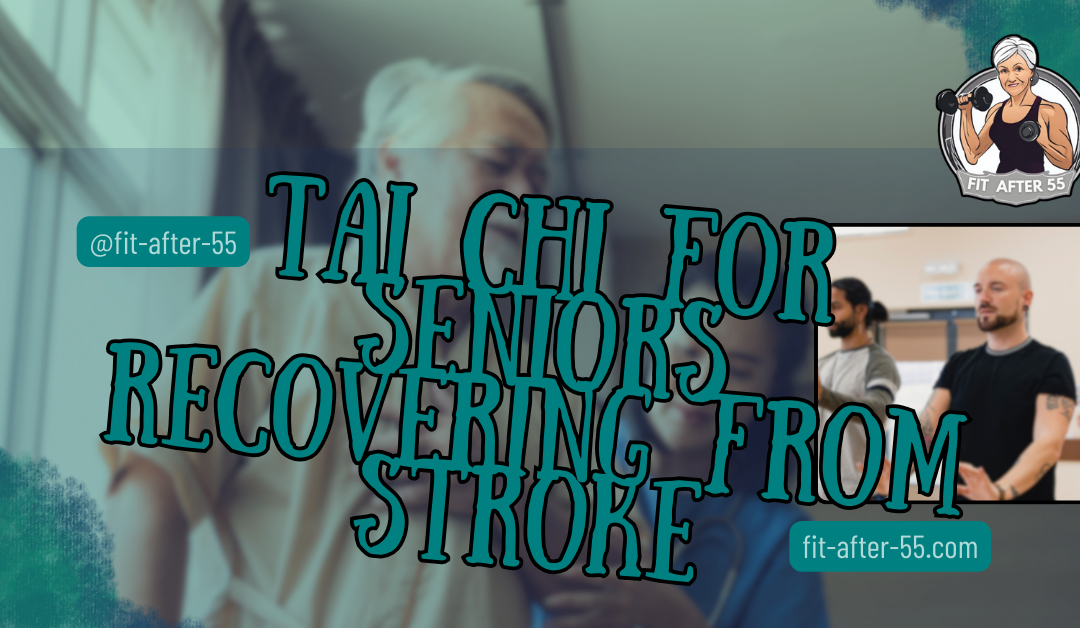Tai Chi For Seniors Recovering From Stroke can be transformative, offering gentle, fluid movements that promote balance, flexibility, and mental clarity. This ancient Chinese exercise is well-known for its calming effects, but its therapeutic potential goes much deeper for those on the path to recovery. Focusing on slow, intentional movements, Tai Chi For Seniors helps rebuild physical strength and improve coordination, all while reducing stress and anxiety—two key factors in healing after a stroke.
Recovery from a stroke can be a long and difficult journey, but Tai Chi For Seniors provides a way to regain control over the body in a low-impact and accessible manner. Whether you want to improve mobility, boost your confidence, or find peace, this gentle practice can be a powerful tool in your rehabilitation. Let’s explore how Tai Chi For Seniors can be a cornerstone of recovery, helping seniors rediscover their strength and serenity one step at a time.
Tai Chi for Seniors Recovering from Stroke: A Gentle Path to Healing

Tai Chi, an ancient Chinese practice, offers hope for seniors recovering from a stroke. This gentle exercise combines slow, flowing movements with deep breathing and meditation. Tai Chi can improve balance, enhance mental health, and boost overall recovery outcomes for stroke survivors. You might wonder how Tai Chi can help after a stroke. It’s simple – the controlled movements help rebuild strength and coordination. The relaxation techniques reduce stress and anxiety, which are common after a stroke.
Even better, you can start with seated Tai Chi exercises if standing is difficult. Studies show promising results. In China, stroke survivors who practiced a modified seated Tai Chi program for three months saw improvements in hand and arm function, balance, mental health, and quality of life. These benefits were greater than those seen with standard stroke rehabilitation exercises.
Key Takeaways
- Tai Chi combines gentle movements with breathing and meditation to aid stroke recovery.
- You can start with seated Tai Chi exercises if standing is challenging.
- Regular Tai Chi practice can improve physical function, balance, and mental health after a stroke.
Understanding Stroke and Its Impact on Seniors
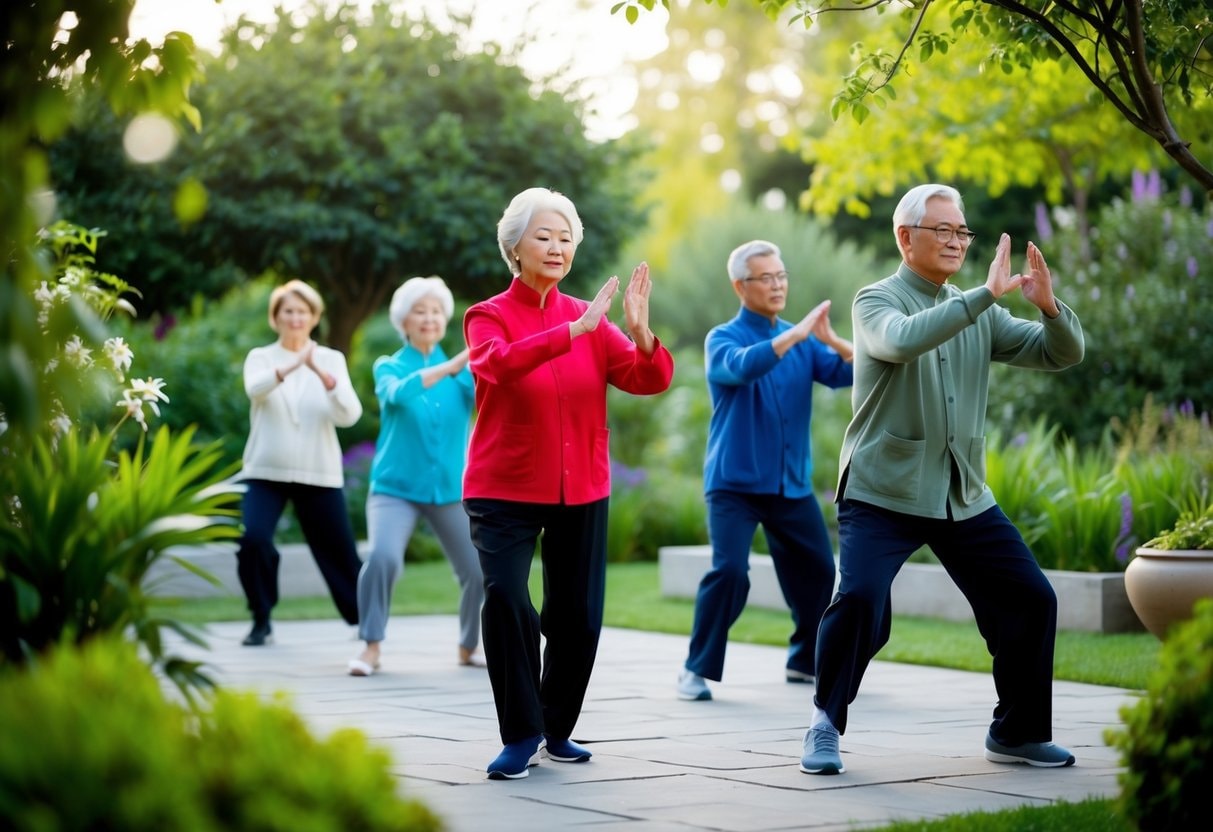
A stroke can greatly affect your life as a senior. It can change how you move, think, and do everyday tasks. Knowing about strokes and their effects can help you or your loved ones better prepare.
Types of Stroke and Their Symptoms
There are two main types of stroke: ischemic and hemorrhagic. Ischemic strokes happen when a blood clot blocks a blood vessel in your brain. This is the most common type. Hemorrhagic strokes occur when a blood vessel in your brain bursts. Stroke symptoms can come on suddenly. You might feel:
- Weakness or numbness on one side of your body.
- Trouble speaking or understanding others.
- Vision problems.
- Severe headache.
- Dizziness or loss of balance.
If you notice these signs, call 911 right away. Quick action can save brain cells and improve your chances of recovery.
Long-Term Effects of Stroke on the Elderly
Strokes can cause lasting changes in seniors. You might face:
- Physical challenges like weakness or paralysis.
- Speech and language problems.
- Memory and thinking issues.
- Emotional changes like depression or mood swings.
These effects can make daily tasks harder. You might need help with eating, dressing, or moving around. Your quality of life may change, but there’s hope for improvement with proper care and rehabilitation.
Stroke Rehabilitation Process
Rehab is key to your recovery after a stroke. It starts in the hospital and can continue for months or years. Your rehab team might include the following:
- Doctors and nurses.
- Physical therapists.
- Occupational therapists.
- Speech therapists.
- Mental health professionals.
They’ll work with you to regain skills and independence as part of your rehab plan tailored to your needs. It might involve exercises, relearning daily tasks, and trying new communication methods. Tai Chi for seniors recovering from a stroke can be a helpful part of your recovery. It’s gentle and can improve your balance, strength, and mood. You can even do seated Tai Chi for seniors recovering from stroke if standing is difficult.
The Role of Tai Chi in Post-Stroke Recovery
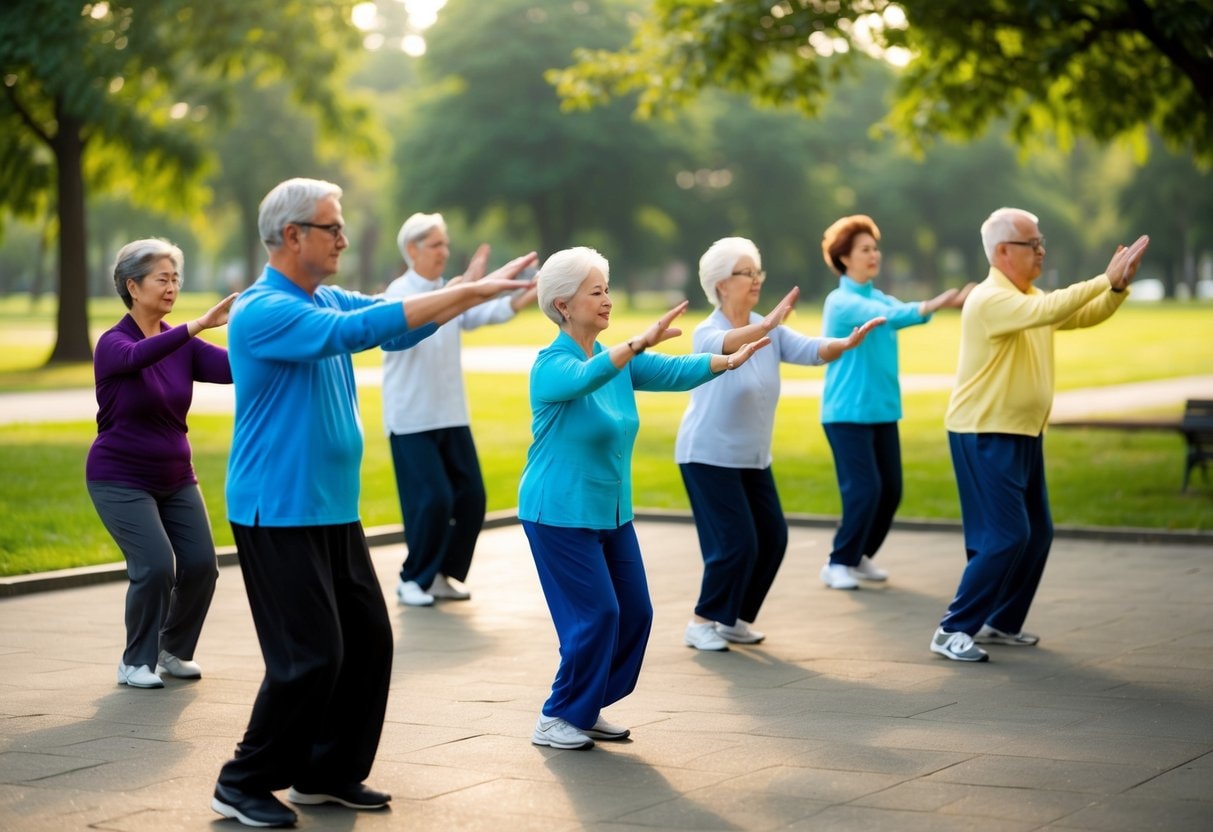
Tai Chi For Seniors Recovering From Stroke offers promising benefits, helping improve balance, strength, and overall function. Research shows promising results for Tai Chi For Seniors Recovering From Stroke as part of rehabilitation, making it a valuable tool in recovery.
Tai Chi as a Form of Rehabilitation Therapy
Tai Chi is a great option for stroke recovery. It’s gentle and can be done while sitting if you have balance issues. The slow, focused movements help rebuild muscle control and coordination. You can start Tai Chi at any stage of recovery. It’s safe and adaptable to your abilities.
The mind-body connection in Tai Chi may also boost your mental health during recovery. Many rehab centers now offer Tai Chi classes. You can learn from trained instructors who understand stroke recovery needs. You’ll likely notice improvements in your strength and stability as you practice.
Evidence from Randomized Controlled Trials
Studies show Tai Chi helps stroke recovery. Researchers have done many trials comparing Tai Chi to other therapies. These studies found Tai Chi improved:
- Balance.
- Walking ability.
- Arm and hand function.
- Quality of life.
One study looked at a 12-week sitting Tai Chi program. Participants had better arm function and sitting balance than those doing standard exercises. Tai Chi also helps prevent falls, a common concern after stroke. More research is ongoing, but current evidence for Tai Chi’s benefits is positive.
Tai Chi and Improvement in Muscle Strength and Motor Function
Tai Chi can boost your muscle strength and motor skills after a stroke. The flowing movements work for multiple muscle groups at once. You’ll practice weight shifting and controlled movements. This helps retrain your neuromuscular system. Over time, you may see improvements in:
- Arm and leg strength.
- Coordination.
- Fine motor skills.
Tai Chi also improves body awareness. This can help you regain lost motor functions. The mindful nature of Tai Chi supports the mind-body connection, aiding recovery. Regular practice can lead to better overall physical function. You might find daily tasks easier as your strength and control improve.
Did you Know?
Tracking your progress in Tai Chi after a stroke is key to staying motivated and seeing real results. Regular assessments help tailor your practice to your needs and recovery pace. The Berg Balance Scale is a great tool to measure your balance progress. It looks at how well you can sit, stand, and move around. You might also use the Modified Barthel Index to check your daily living skills. This covers things like dressing and bathing.
Check out this video about how Sitting Tai Chi exercises improve recovery outcomes for older stroke survivors.
By: ANI News
Integrating Tai Chi into Daily Routines for Seniors
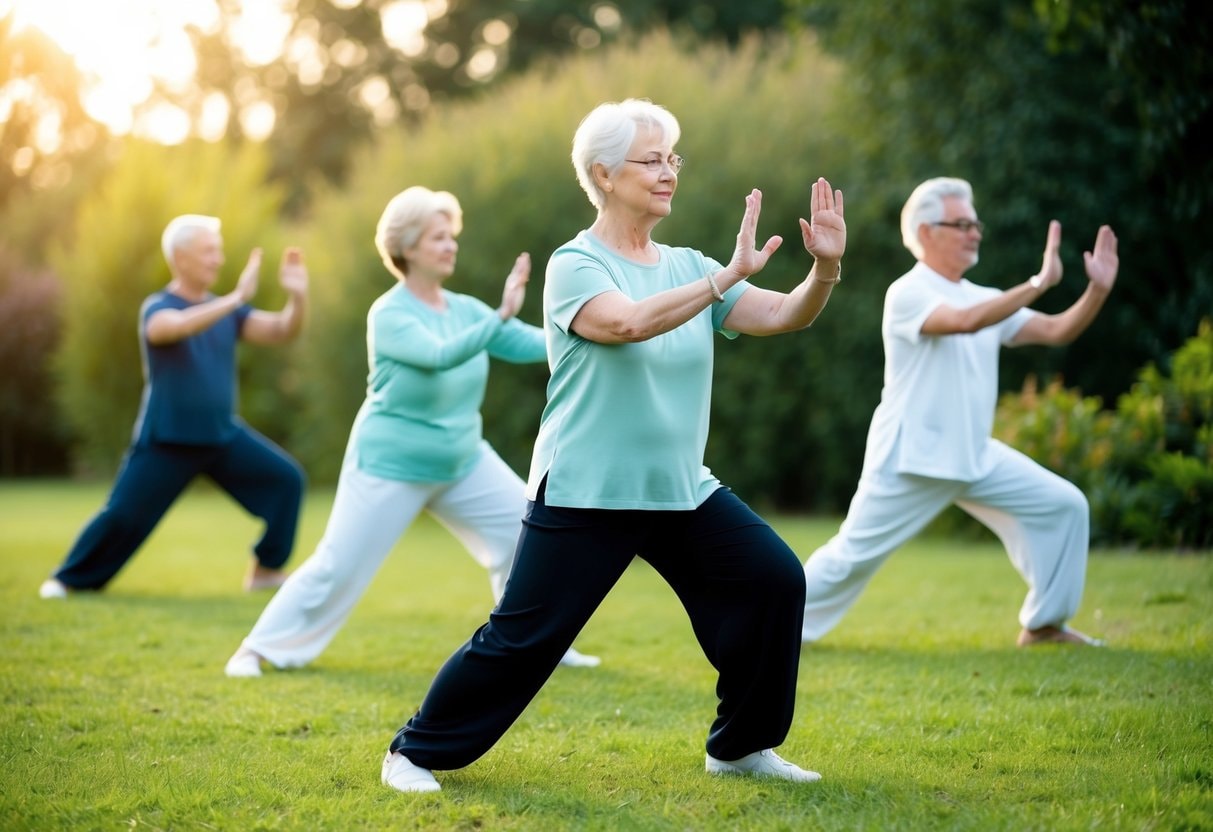
Tai Chi For Seniors Recovering From Stroke can be a great addition to your daily routine. It helps improve strength, balance, and flexibility, making it especially beneficial for stroke recovery. You can start small and gradually increase your practice as you regain mobility and confidence.
Starting with Sitting Tai Chi Exercises
Begin with sitting Tai Chi exercises to build confidence and strength. These are perfect if you have limited mobility or are worried about falling. Start with gentle arm movements while seated. Focus on deep breathing and slow, controlled motions.
Try shoulder rolls, and neck stretches to improve your shoulder range of motion. As you get comfortable, add leg lifts and ankle rotations. These help with sitting balance control. Aim for 5-10 minutes of sitting Tai Chi twice a day.
Adapting Tai Chi for Different Levels of Mobility
If you have hemiplegia or other mobility issues, don’t worry. Tai Chi can be adapted to fit your needs. Use a chair or wall for support during standing exercises. Start with simple weight shifts from one foot to the other. This helps improve balance and reduce the fear of falling.
As you gain strength, try single-leg stands for a few seconds. For upper body work, focus on arm circles and gentle pushes. These moves can help with coordination and arm strength. Remember to go at your own pace and listen to your body.
Creating a Safe and Enjoyable Exercise Environment
Set up a safe space for your Tai Chi practice. Clear the area of tripping hazards and ensure good lighting. Wear comfortable clothes and supportive shoes. Consider using a self-guided video to help you learn the moves. Many videos are designed specifically for seniors recovering from stroke.
Try to practice at the same time each day to build a routine. Morning sessions can energize you, while evening practice may help you relax before bed. Don’t forget to stay hydrated and take breaks when needed.
Tai Chi For Seniors Recovering From Stroke: Comparative Benefits of Tai Chi
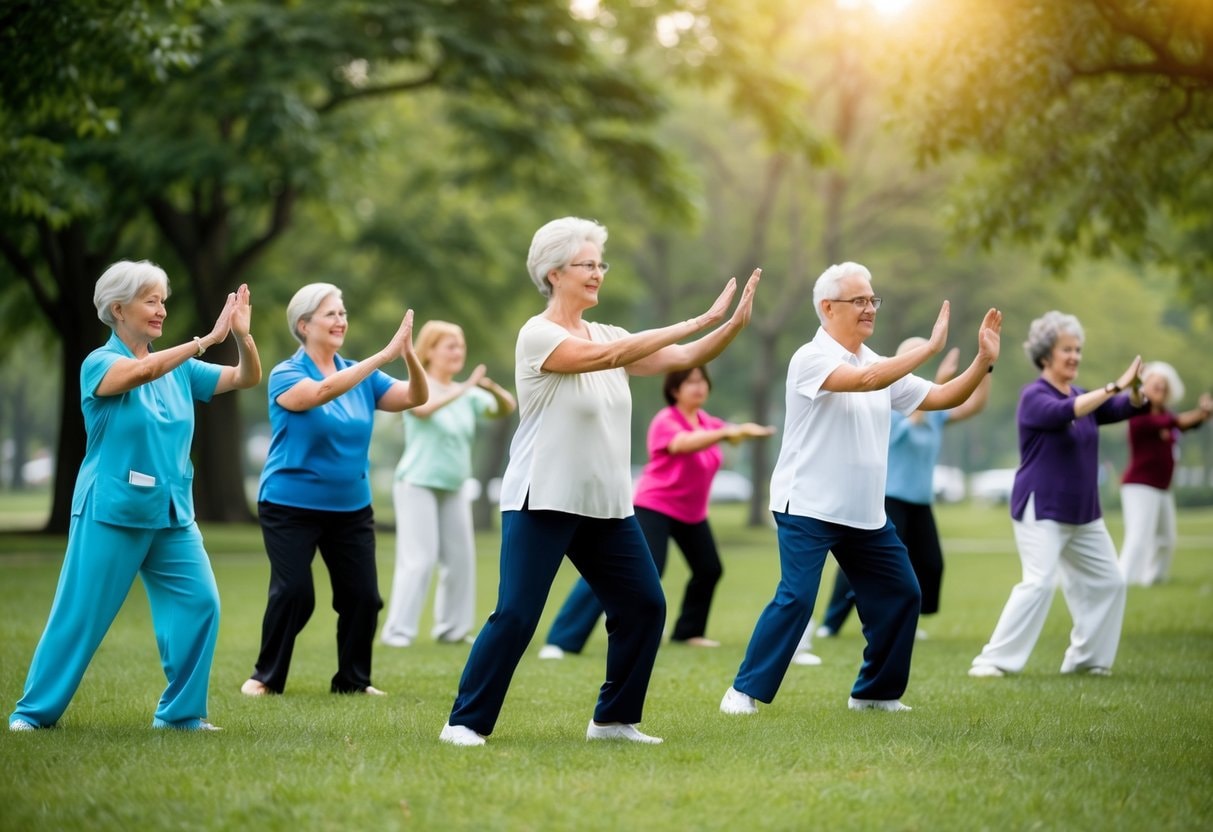
Tai Chi offers unique advantages for seniors recovering from a stroke. It combines gentle movements with mental focus, providing physical and psychological benefits.
Tai Chi vs. Other Physical Therapies
Tai Chi stands out from other therapies for stroke recovery. Unlike standard exercises, it improves balance, hand and arm function, and quality of life. You can practice Tai Chi sitting down, making it accessible even if you have mobility issues.
Compared to traditional physical therapy, Tai Chi is more enjoyable. This can help you stick with it long-term. It’s also cheaper and doesn’t need special equipment. Tai Chi’s slow, controlled movements are perfect for rebuilding strength and coordination. You can adjust the difficulty as you progress in your recovery.
Tai Chi for Enhancing Mental Health
Tai Chi does wonders for your mental health after a stroke. It reduces stress and boosts your mood. The focus required during practice can help clear your mind of worries. Regular Tai Chi practice may lower symptoms of depression. This is crucial, as many stroke survivors struggle with mood changes.
The social aspect of group Tai Chi classes can combat feelings of isolation. You’ll meet others facing similar challenges, creating a supportive community. Tai Chi’s meditative nature promotes mindfulness. This can help you manage post-stroke anxiety and frustration.
Tai Chi’s Effect on Reducing the Fear of Falling
Fear of falling is common after a stroke, but Tai Chi can help. The practice improves your balance and coordination, making you feel more stable. Your fear of falling will decrease as you gain confidence in your movements. This can lead to increased activity and independence in daily life.
Tai Chi teaches you to be more aware of your body and surroundings. This heightened awareness can help you avoid potential fall hazards. The slow, deliberate movements in Tai Chi also improve your reaction time. This can help you catch yourself if you do start to lose balance.
Guidance on Implementing Tai Chi Programs
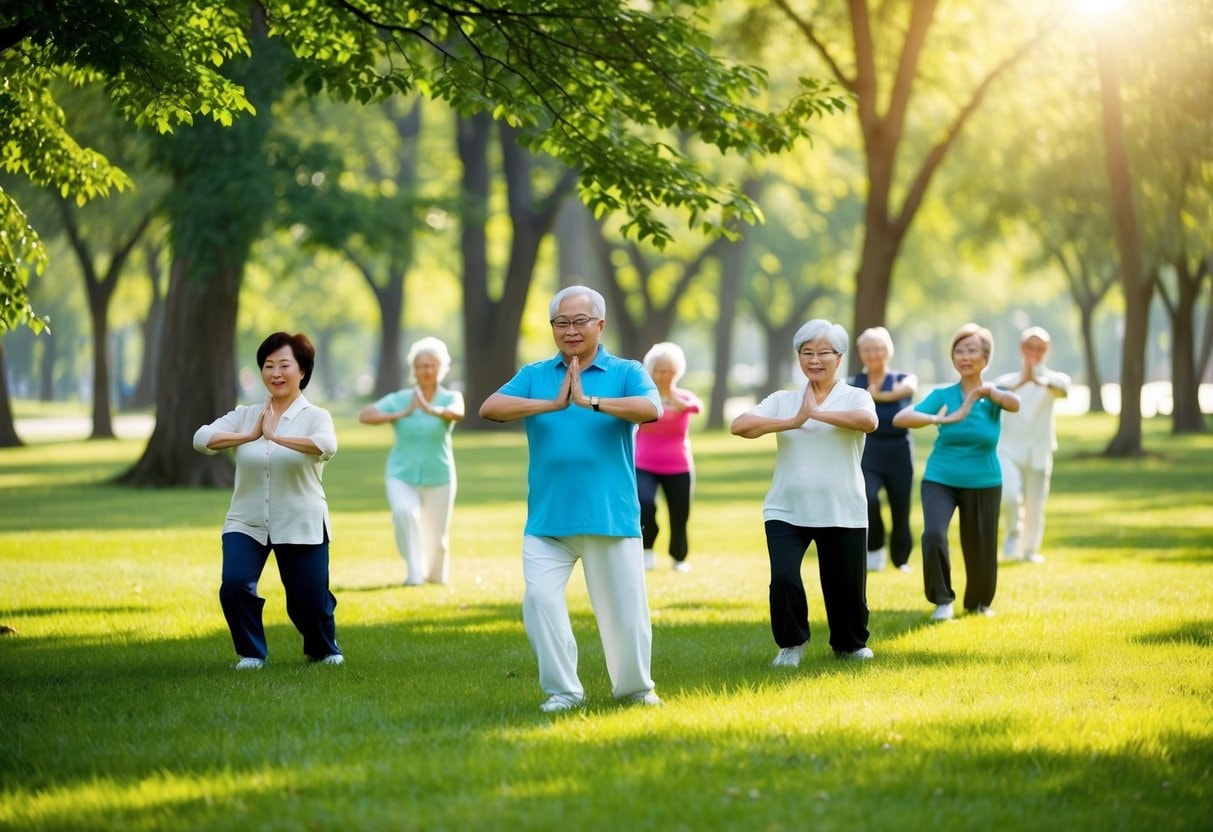
Starting a Tai Chi program for seniors recovering from a stroke can be very helpful. Here are some tips to get you going and make the most of this gentle exercise.
Selecting Appropriate Tai Chi Styles and Movements
Choose Tai Chi styles that are safe and easy for seniors recovering from a stroke. Sitting Tai Chi is a great option. It’s gentle on the body and good for balance. Focus on slow, smooth movements. These help with coordination and are easier to follow. Start with simple arm and hand motions. As you get stronger, add more complex moves. Pick exercises that work on areas affected by stroke. This might include:
- Arm stretches for upper body strength.
- Gentle twists for core stability.
- Slow leg lifts for lower body function.
Remember to breathe deeply and stay relaxed. This helps with both physical and mental health.
Organizing Group Tai Chi Sessions for Stroke Survivors
Group sessions can be fun and motivating. Here’s how to set them up:
- Find a quiet, open space.
- Make sure there are chairs for everyone.
- Keep the group small, about 5-10 people.
- Schedule sessions 2-3 times a week.
- Each session should last 30-60 minutes.
Start each class with a warm-up. End with a cool-down. This helps prevent injury. Use music to set a calm mood. It can also help with timing and rhythm. Encourage participants to go at their own pace. Praise their efforts and progress. This boosts confidence and keeps them coming back.
Utilizing Resources: Self-Guided Exercises and Community Support
You can practice Tai Chi at home too. Look for online videos made for stroke survivors. These show you how to do the moves safely. Get a Tai Chi book or DVD from your local library. These can guide you through exercises step by step. Join a community Tai Chi group. Many parks and community centers offer classes. Some might be free or low-cost.
Ask your doctor or physical therapist about Tai Chi. They might know of programs in your area. They can also give you tips on what moves are best for you. Even a little Tai Chi can help. Start slow and build up over time. Your balance and strength will improve with practice.
Safety and Precautions for Tai Chi in Stroke Recovery
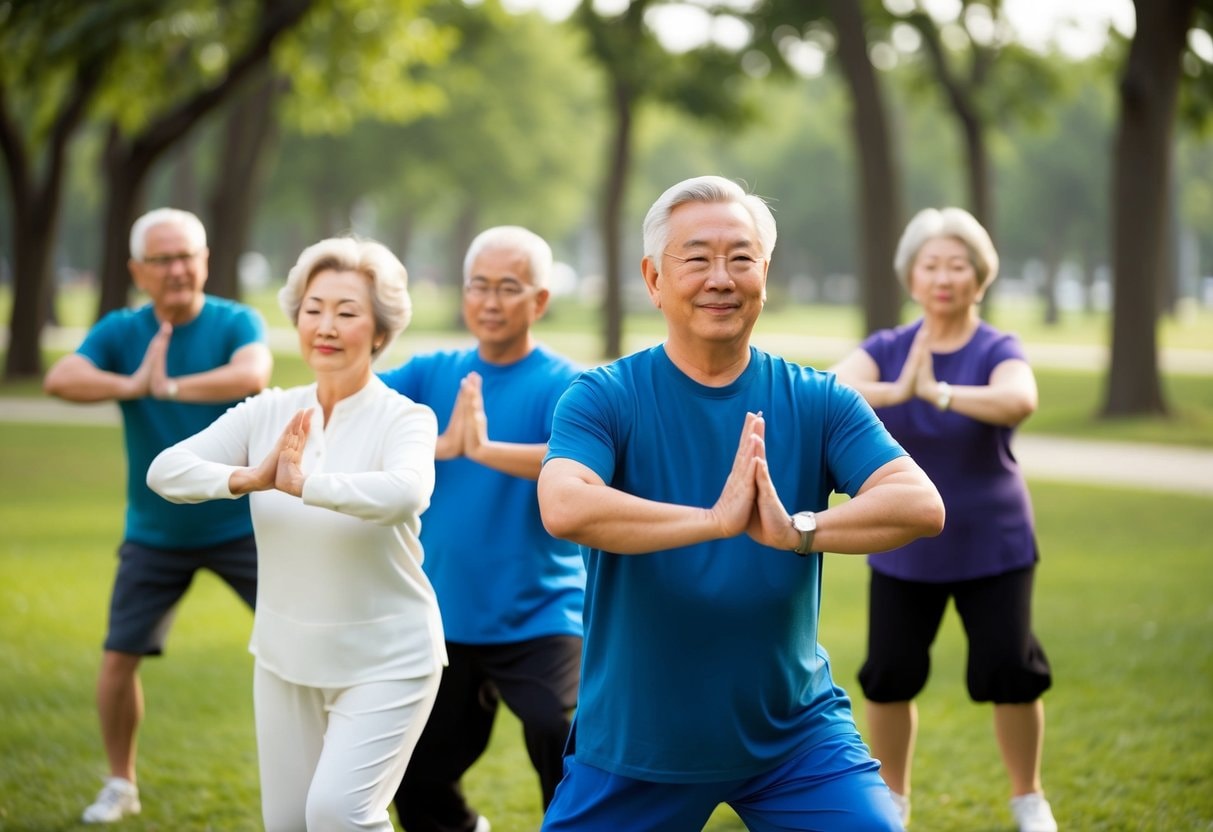
Tai Chi For Seniors Recovering From Stroke can be a safe and effective exercise, but taking proper precautions is important. You should know potential risks and adapt Tai Chi exercises to your abilities.
Understanding and Mitigating Risks
You must be careful about balance control when practicing Tai Chi after a stroke. Falls are a big concern, so start with seated exercises if needed. Talk to your doctor before beginning any new exercise program. They can advise on any limitations you may have.
Watch out for signs of fatigue or dizziness. Take breaks when you need to. Don’t push yourself too hard. Consider practicing with a partner or caregiver nearby for extra safety. They can offer support if needed. Use a chair or wall for balance at first. As you get stronger, you can try standing exercises.
Adapting Exercises for Individuals with Hemiplegia or Partial Paralysis
If you have hemiplegia or partial paralysis, you can still enjoy Tai Chi. You just need to adapt the moves. Start with seated Tai Chi. This lets you focus on upper body movements and breathing. Use your stronger side to help guide the weaker one for arm exercises. This can improve muscle strength and motor function.
Try mirror therapy. Watch your good arm move in a mirror while coping with your affected arm. Don’t worry if you can’t do all the moves perfectly. The goal is to improve slowly over time. Remember, even small movements can be beneficial. Focus on what you can do, not what you can’t.
Check out this video on Beginner Tai Chi Exercises in Bed After a Stroke.
By: OT Dude
Embracing Tai Chi for Holistic Stroke Recovery
Tai Chi for seniors recovering from stroke offers a gentle yet effective way to regain balance, strength, and overall physical function. Through its slow, mindful movements and deep breathing exercises, it helps improve coordination, motor skills, and flexibility, making it an excellent tool for rehabilitation. Starting with seated exercises and gradually progressing to more challenging movements allows individuals to adapt to their unique abilities, reducing the risk of injury while promoting steady progress. Research shows that regular Tai Chi practice not only aids in physical recovery but also enhances mental well-being, helping to reduce anxiety, stress, and the fear of falling—a common concern after a stroke.
Incorporating Tai Chi into a daily routine can provide stroke survivors with a sense of control over their recovery, fostering both physical and emotional healing. The adaptable nature of Tai Chi makes it accessible to seniors at different stages of their rehabilitation, whether through self-guided practice or group classes tailored to their needs. As part of a holistic approach to stroke recovery, Tai Chi encourages a calm, focused mind and a stronger, more resilient body, helping seniors rediscover their confidence and independence.
Frequently Asked Questions
What Type of Tai Chi Exercises Are Recommended for Seniors in Stroke Recovery?
Sitting Tai Chi exercises are often recommended for seniors recovering from stroke. These exercises are easier to do and safer for those with balance issues. You can start with simple arm movements while seated. As you get stronger, you can try standing exercises with support.
Are There Specific Tai Chi Movements Beneficial for Improving Balance in Stroke Survivors?
Yes, certain Tai Chi movements can help improve your balance. The “Single Leg Stand” and “Heel-to-Toe Walk” are great for this purpose. These moves help strengthen your legs and core. They also improve your body awareness, which is key for better balance.
How Often Should a Senior Recovering From a Stroke Practice Tai Chi for Optimal Benefits?
Aim to practice Tai Chi 2-3 times weekly for about 30 minutes each session. This schedule allows for rest between workouts while still providing benefits. Remember to listen to your body. If you feel tired, taking a break or doing shorter sessions is okay.
Revamp Your Fitness Path Post-55!
Greetings, fitness fans! Unearth the secrets to staying energized and healthy with Fit After 55! Whether you’re a fitness veteran or a newcomer, our platform is your ultimate guide to total well-being. From crafting attainable objectives to recognizing your progress, we’re dedicated to helping you reshape what it means to flourish after 55. Check out our website and connect with us on Facebook to unlock your true capabilities with Fit After 55!

